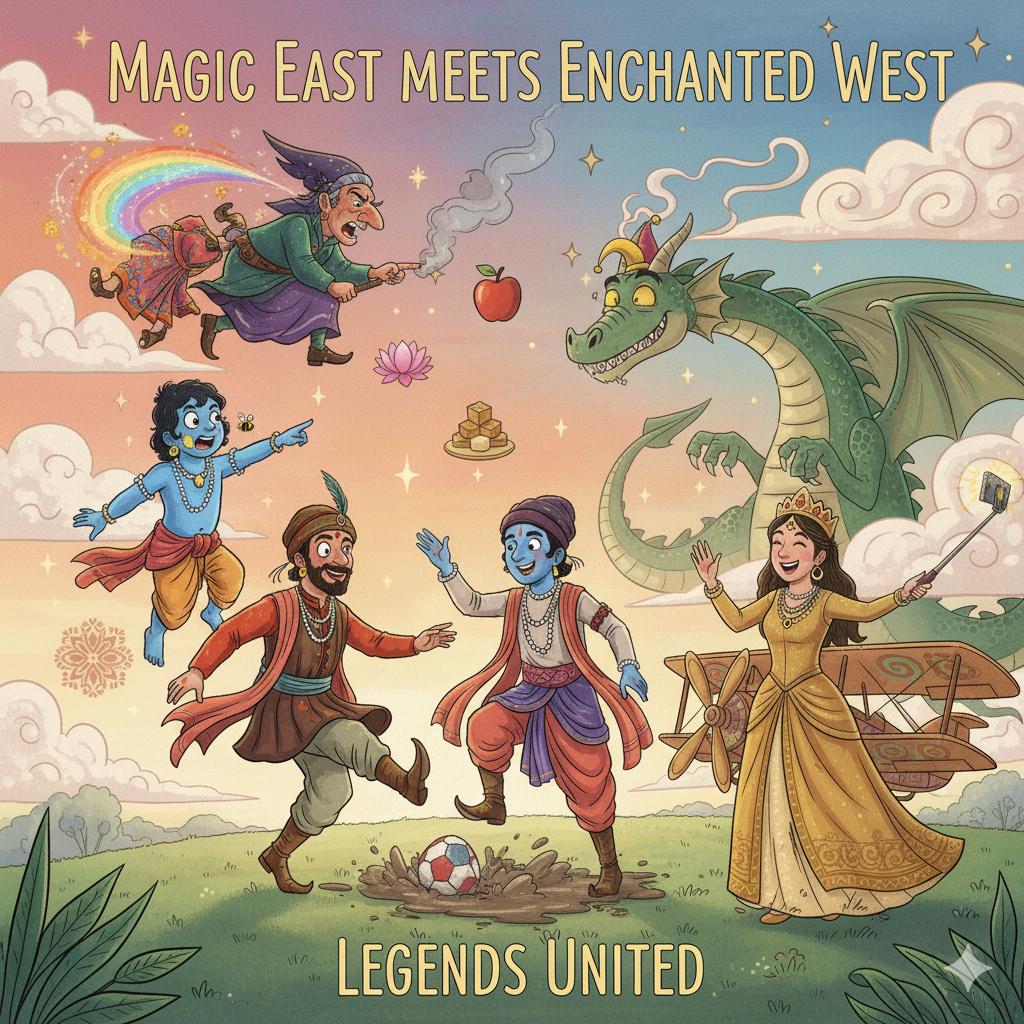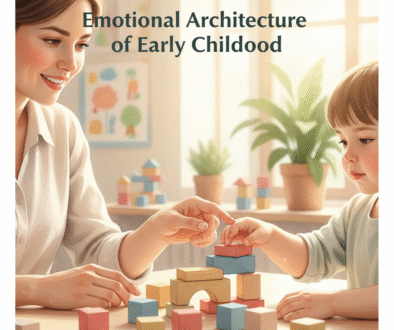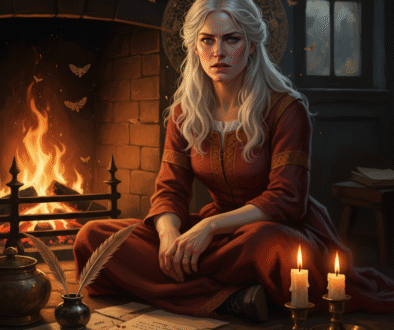
When Legends Became Teachers: Polish Tales, Indian Myths, and Childhood Between Worlds
I grew up in a small Polish town where books were treasures, not commodities. Our school library existed, but most of it was dull, “grown-up” literature that felt like work. My parents, sensing my hunger, made sure I had a new book every weekend. I devoured them. Fast. Sometimes, when the house was already dark, I’d sneak under the quilt with a small torch. “Go to sleep! You’ll spoil your eyes!” my mother would scold. But by then, I was far away—in lands of kings eaten by mice, dragons devouring cities, princesses drowning themselves to preserve honor, and four daughters who were the seasons themselves.
These were the starodawne legendy—old Polish legends. They were sharp, moral, poetic, and sometimes terrifying. Yet I never felt fear in the way a child might today. I felt awe, curiosity, and a strange comfort. I grew up learning the language of courage, cunning, humility, and wonder. And somewhere along the way, I realized, Polish and Indian legends for children ..that these stories weren’t just entertainment; they were a map for living.
The Fern Flower: A Quest for the Impossible
One of the most enchanting tales was the story of the Kwiat Paproci, the Fern Flower. Legend had it that on the shortest night of the year, during the summer solstice, the humble fern would bloom a magical flower. It appeared only once annually and promised immense happiness and fortune to whoever found it—but only if they were pure of heart. The journey was dangerous, full of mystical guardians and unseen challenges.
As a child, I was mesmerized. The magic was in the search, in the belief that beauty and reward could exist even in hidden, impossible places. When I told this story to my students in India, their eyes widened with intrigue. They understood instinctively that the tale wasn’t really about a flower—it was about courage, perseverance, and the belief that extraordinary things sometimes require extraordinary effort.
Kings, Dragons, and Children’s Laughter
There was King Popiel, so vain and greedy that he poisoned his uncles. Nature delivered justice: mice swarmed his tower and devoured him alive. When I told this story in India, one little boy squealed, “Ewww! The mice are eating him!” Another girl giggled: “But mice are so small—how can they eat a whole king?” A quieter child whispered with wide eyes: “Maybe the mice were magic…”
It wasn’t fear. It was curiosity, imagination, and the kind of logic only a child can bring.
Then there was the Wawel Dragon, fire-breathing and enormous, terrorizing Kraków until cleverness triumphed: sulfur-stuffed sheep, a trick instead of a sword. I watched my children clutch each other’s hands when I told them the story, the suspense hanging in the air. Later, when we actually visited Kraków, the dragon breathed real fire, and their gasps mirrored my own childhood awe. The story had leapt off the page and come alive, transforming imagination into memory.
Princess Wanda—who chose her own path rather than submit to a tyrant—taught courage and moral strength. And the tale of the Grandfather and his four daughters—Spring, Summer, Autumn, Winter—reminded my students that life is cyclical, each stage with its lessons and its beauty.
Polish Legends I Could Not Forget
I devoured many books of starodawne legendy. There was Janosik, the Robin Hood of Poland, whose daring deeds taught fairness and courage. Rusałki, water spirits, taught respect for nature and the unseen. Baba Jaga, with her hut on chicken legs, was terrifying but a lesson in resourcefulness: sometimes, danger tests us rather than destroys us. And of course, Syrenka Warszawska, the Warsaw Mermaid, embodied protection, vigilance, and pride in one’s home.
Each story, though whimsical or frightening, left me with awe and curiosity, a hunger to understand the world’s magic and complexity.
Carrying Stories Into Indian Classrooms
When I moved to India, I carried these Polish legends like secret spices in my teaching bag. I had to soften the darker edges—not to remove magic, but to respect cultural differences and sensitivity. Popiel became “a greedy king who learned a lesson about caring for everyone,” and the dragon became “a clever monster story about thinking before acting.”
Indian myths, of course, offered their own treasures. Bala Krishna, the butter thief, showed that mischief can be divine. Spilled paint became Krishna’s butter, and playful pranks became acts of wonder. Sudama, poor yet loyal, taught generosity and devotion. My students began noticing tiny acts of kindness in each other, understanding that value is often found in small, sincere gestures.
Legends shaped character quietly, weaving imagination, moral reflection, and empathy together.
When Krishna Met Baba Jaga
But the real magic happened when the stories began to mingle.
One afternoon, after a story session, a child asked:
“What if Krishna met Baba Jaga?”
We laughed, but soon the tale grew wings. Krishna, with a playful whoosh of his finger, would flick butter straight at Baba Jaga’s nose. Maybe he’d even give her a little bite, and she—terrified—would run far, far away, broom flying crooked in panic.
Another day, a boy proposed:
“If Janosik played football with Krishna, they would win for sure! Because both are thieves, but good ones.”
The whole class burst out laughing. Two trickster-heroes, from opposite ends of the world, suddenly teammates on the same field.
To me, these mash-ups were more than just funny. They revealed a deep truth: children don’t see borders in myths. Adults categorize, label, protect heritage, but children invite characters across cultures as if they had always belonged together. Legends don’t clash; they sip tea together, kick footballs, and swap tricks.
Superstitions: Invisible Teachers
Both cultures also taught through shadows and whispers. In Poland, whistling indoors could summon the devil; bread must never be wasted; black cats crossing your path demanded respect. In India, sweeping at night, cutting nails after sunset, or the crow’s caw could carry unseen messages.
I never feared these; I respected them. And in my classrooms, they became playful guides, teaching attention, mindfulness, and respect for the unseen.
Stories in Practice: My Children’s Learning
What brings legends to life is experience. My children had heard the story of the Wawel Dragon countless times, yet seeing it in Kraków, fire streaming from stone, made their imaginations explode. They retold it, invented dialogue, claimed it as their own adventure.
The Kwiat Paproci story, the Fern Flower, sparked the most curiosity. My children asked endlessly, imagining secret forests and night-time adventures. They learned that magic isn’t just in the flower—it’s in the journey, the courage to seek it, and the patience to find it.
And then there were the classroom twists. After I told Princess Wanda’s story, one child raised his hand seriously and said, “But why didn’t she just take an airplane far away and call her parents for money to buy toys and shampoo?” Another added, “Maybe if the dragon got a Happy Meal from McDonald’s, he wouldn’t eat the princess!”
Absurd? To adults, maybe. To children, perfectly logical. And more importantly, proof that the story was alive—being owned, reimagined, and carried forward.
Final Reflection
Stories are not entertainment; they are vessels of character, imagination, and moral understanding. They are soft armor, invisible wings, sparks of wonder, and bridges between cultures, time, and generations.
As a child, I retold Polish stories with my own twists. As a teacher, I allowed children to do the same—whether imagining a dragon chewing on fast food or Baba Jaga running from butter. Children’s additions were never “wrong.” They were proof that the stories were breathing.
And now, years later, I see the gift clearly: legends shape us, but they also invite us to play. They can travel across borders, pick up new costumes, and make new friends along the way.
Maybe that’s why I still love watching a child’s imagination unfold. Where else could Krishna defeat Baba Jaga with butter, or Janosik score a football goal with a divine partner in crime? Adults would argue about theology, culture, or history. Children? They just laugh and say: “That would be fun!”
And perhaps, they are wiser than we think.



2025-09-24 @ 01:36
Great reads